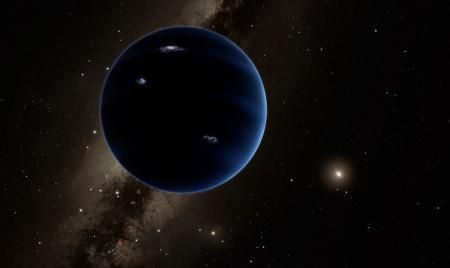Where Is Planet Nine? Citizen Scientists Spot Four Possible Candidates

A team of researchers from the Australian National University (ANU) has flagged four unknown objects that could be candidates for the fabled Planet Nine — or Planet X, if you will. The objects were discovered by a team of about 60,000 citizen scientists poring over data gathered by the 1.3-metre SkyMapper telescope at Siding Spring Observatory in Australia.
The exact nature of the objects is still not clear, and further observations using the SkyMapper and other telescopes around the world would be needed to ascertain their true identity.
Read: Why Are The Planetary Axes Tilted?
“We've managed to rule out a planet about the size of Neptune being in about 90 per cent of the southern sky out to a depth of about 350 times the distance the Earth is from the Sun,” lead researcher Brad Tucker, an astrophysicist at ANU, said in a statement. “With the help of tens of thousands of dedicated volunteers sifting through hundreds of thousands of images taken by SkyMapper, we have achieved four years of scientific analysis in under three days.”
The existence of Planet Nine was first hypothesized in 2014, when astronomers looked at the orbits of a newly-discovered dwarf planet beyond Pluto and suggested that its, and several other Kuiper Belt objects’, orbital characteristics were indicative of the presence a large “perturber.”
Since then, scientists have studied the orbits and locations of several trans-Neptunian objects and cited their observations as evidence for Planet Nine’s existence. In a recent paper, a team of researchers argued this planet may even be responsible for the orbital tilts of the eight known planets in the solar system.
This object, if it exists, is believed to be several times more massive than Earth and is locked in an extremely elliptical orbit around the sun — one that, at its closest point, is at least 200 times farther away from the sun than Earth.
“Planet Nine is predicted to be a super Earth, about 10 times the mass and up to four times the size of our planet. It's going to be cold and far away, and about 800 times the distance between Earth and the sun. It's pretty mysterious,” Tucker said in an earlier statement.
Some scientists suggest it’s likely that this object is a former “rogue planet” that our sun captured long ago, while others believe it may have once had a tight orbit around the sun, but was later booted out to where it is now due to Jupiter’s and Saturn’s gravitational influence.
© Copyright IBTimes 2025. All rights reserved.






















